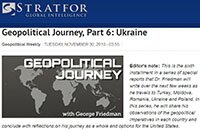
Dr. George Friedman is the founder and Director General of Strategic Forecasting, Inc. (STRATFOR), often referred to as “shadow CIA”, an online publisher of geopolitical intelligence analytics, pioneer of private intelligence. In his articles under the title “Geopolitical Journey", written under the influence of several weeks' trip to Turkey, Moldova, Romania, Ukraine and Poland in 2010, he reflects on foreign policy in the context of the end of the Cold War, balance of forces in Europe, prospects for Eastern European countries in their confrontation with the East and the West, options for containment of Russia and Germany's expansion after the 2008 crisis.
“Geopolitical Journey” by George Friedman. Part 6: Ukraine («STRATFOR», USA) http://bbs-news.info/
George Friedman's attempts to write objectively about what he saw while traveling in Central and Eastern Europe and in the Middle East deserve respect. However, for the author, who highlights issues of geopolitics, an attempt to accurately assess the situation and predict its development in the future, is obviously not enough. Here one can't do without a whole complex of knowledge, which together with traveler's impressions would make a truly objective picture.
 |
|
Dr. George Friedman - founder and Director general of Strategic Forecasting, Inc. ( STRATFOR) http://votarea.com/ |
Unfortunately, not everyone who is now trying to study geopolitics professionally has such knowledge. In the way to getting such knowledge there was a variety of factors, in particular, subjectivity of teachers and circumstances of life. This is natural. Even the ancient thinker in the prime of his creative powers and national recognition once said: “I know that I know nothing.” We study and understand the world throughout our life, tirelessly seeking and adding to the mosaic picture of our image of the world more and more fragments. I hope that my modest observations about the past and the present of the region, the inhabitant of which I have been all my life will help Friedman and his fans better understand and more clearly see its galactic perspective.
First of all, I agree with Friedman that the current attempt of the “Russian territorial restoration” is a serious geopolitical problem of the countries of the Black Sea region. After all, Russia is a stranger here. It is not a country of the Black Sea region any more. It was not in the past either, although for some time northern and eastern coasts of the Black Sea belonged to it. “Black-Sea-regionness” is, first of all, belonging to a particular civilization, to settled tiller culture, the roots of which date back to the time of Tripoli with its painted ceramics, identical to the ancient Crete and Mycenae ceramics. An outstanding Ukrainian geopolitician Yuri Lypa has already written about this, his books are worth being read by Europeans and Americans. “Black-Sea-regionness” (read “Mediterraneanness”) is typical of Ukrainians. It can be traced for thousands of years in the material and spiritual culture of the Ukrainian people.
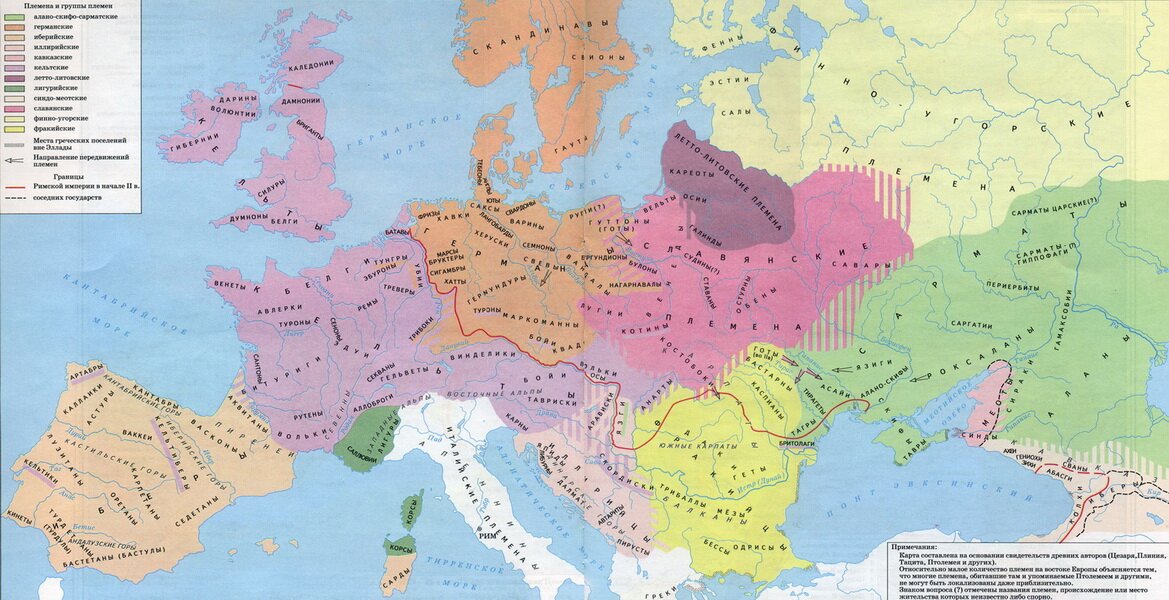
|
|
The ethnic map of I-II century Europe http://www.auxilia.ru/ |
But it is not present in the mentality and way of life of those who now are called by the collective name “Russkie”. They came from a different cultural circle —the Finno-Ugric Upper Volga hunting-nomad one. Therefore it is not surprising that if the Ukrainian's most common notion of identification has always been land, for a “Russkiy”, according to researchers, — such a notion was a road. And it still is.
Attempts of primitive, but aggressive nomads of the North-Eastern crannies of the European Plain to subdue high culture of the tiller of the Black Sea region did not bring any good to its inhabitants. Nor did the arrival of the hordes of Genghis Khan.
Peoples of the region fought hard and long struggle with hordes of the Mongol conqueror. Sometimes successful and sometimes not. But it is significant that, unlike Rostov and Suzdal lands which quickly obeyed and practically painlessly joined the nomad civilization of conquerors, the Black Sea countries incessantly fought the invaders, because they were from an entirely different culture, a strange and hostile by its content to indigenous ethnic groups of the Black Sea basin.
The same struggle was waged against Russian expansion until the northern bear was driven away in 1991 to his forest den on the Moskva-river. It happened not because of military or other actions of the USA and its NATO allies, but as a result of long national liberation struggle of the peoples of Central and Eastern Europe for their freedom and independence. First of all — of Ukrainians. I state this because I was not just a witness, but also an active participant of those events.
Then I was bitterly impressed that many Western politicians, in particular, leaders of Great Britain and the USA, for the sake of pleasing Russia, objected to Ukraine's independence, seeing it as the act of manifestation of “murderous nationalism”. This behavior of public figures, who constantly stress their support for democracy in the world, was at least surprising. However, I do not blame them as human beings. For I perceive the role of advisers to higher officials who can so represent their subjective vision of a problem, that it will look like the highest state of wisdom. And will impose it to their chiefs. Therefore, I was alarmed by Friedman’s phrase that visions and expectations of Western and South-Western Russia's neighbors about their future do not matter, because the world is not going to try and change to suit them.

|
| The world according to Americans http://kornelij.livejournal.com |
Even if the world in Friedman's mind includes just the USA and its partners and allies, this world, willy-nilly did tune up to the events of August 1991 at the territory of the Soviet Russia (USSR). It will keep matching. This cannot be helped. After all, Western and South-Western neighbors of Russia are not a wild and stick-in-the-mud its periphery. On the contrary, they are countries with great political history and ancient culture, whose influence on Russia had brought this, according to Herodotus, land of “androphages” - man-eaters on the path of civilization. That civilization which now on a planetary scale is being represented by the United States, and to which Friedman himself belongs.
Shortly before declaring its independence in 1989, Ukraine had been producing 295.3 billion KWh of electricity (Great Britain — 308, France — 417, Germany — 428), extracting 137 million tons of salable coal (Great Britain — 101, France — 13, Germany — 194), producing 54.8 million tons of steel (UK — 19, France — 19, Germany — 41), had built 115,9 thousand tractors (UK — 82, France — 25, Germany — 75, USA — 86) and metal cutting machines — 32.2 thousand (Great Britain — 26, Germany — 103), had harvested 51.2 million tons of grains and legumes (UK — 23.1 France — 59.2, Germany — 26.3) as well as potatoes — 19.3 million tons (UK — 6.4, France — 6.0, Germany — 7.8, USA — 16.8). In other words, the economy of Ukraine was at the level of top countries of Western Europe.
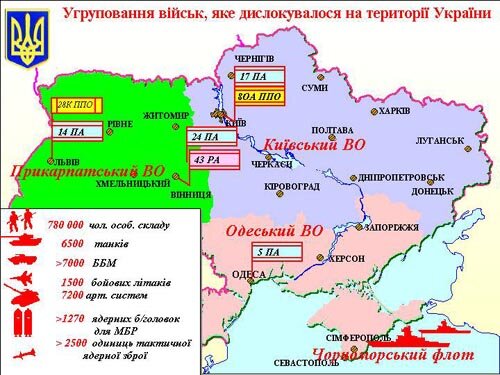 |
|
Groupings of troops that were dislocated at the territory of Ukraine in 1991. http://from-ua.com/ |
Ukraine had not been lagging behind in the defense sphere either. Its groups of troops and forces numbered about 780.000 people. In the arsenal there were 6.5 thousand tanks, more than 7.000 armored combat vehicles, up to 1.5 thousand combat aircrafts, more than 350 ships and vessels, 1.272 strategic nuclear warheads for intercontinental ballistic missiles and more than 2.5 thousand tactical nuclear weapons. That is, in September 1991 the Armed Forces of Ukraine were the most powerful ones in Europe.
So, by its economic and military potential, Ukraine was the only real contender for the role, according to Friedman, of a “full Southern European center of force”. Uniting of the Black Sea region around Ukraine would have provided the balance of forces in Europe and would have guaranteed the military and political stability in the area from Scandinavia to Asia Minor. Ukrainian politicians from the national-democratic camp were trying to persuade of this their Western colleagues. It was in their environment that the idea of “Mizhmor'ya” (“Between-the-Seas land”) had been actively discussed. An interpretation of that idea Friedman offers his readers today.
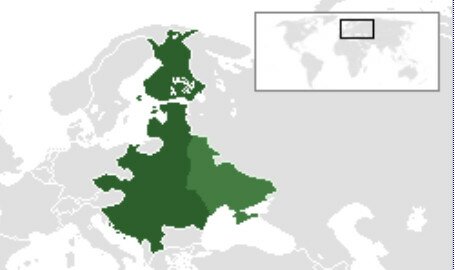 |
|
"Mizhmor'ya" - a project of a confederative state, which would include Poland, Ukraine, Belarus, Lithuania, Latvia, Estonia, Moldova, Hungary, Romania, Yugoslaviya, CzechoSlovakia, and perhaps, Finnland, - proposed by Yuzef Pilsudskyi after the WWI. This confederation had to stretch from the Black and Adriatic Seas to the Baltic Sea, hence the name http://ru.wikipedia.org/ |
In his view, “Mizhmor'ya” may be “future alliance that will block Russians, separate them from Germans and will gently stop the Turkish expansion in South-Eastern Europe”. The opinion expressed by Friedman is interesting. But it does not hold water, if one looks at the list of potential members of the Union, composed by Friedman. It includes Poland, Slovakia, Hungary, Romania and “optionally”, Bulgaria. In other words, we are dealing with a kind of option of a “Little Entente”, a sort of system of military-political alliances created by France after World War I to curb Germany on its eastern borders. Despite its content, this system turned out to be still-born. It could not play the role of a deterrent and to prevent the explosion of World War II. Because the Union did not include Ukraine. Those who defeated Germany in the World War ignored in European politics the “Ukrainian question” and to please the pro-Russian lobby in their countries, they did not support the national liberation movement of the Ukrainian people in 1917 – 1920s. The consequences of the indifferent contemplation of the fall of the independent Ukrainian People's Republic and the acquiescence of the Great Entente on the division of the territory of the UPR between the neighboring countries became the revival of the Russian military potential and restoration of the Kremlin's expansion to the West.
The Anglo-Saxon and the French's betting on Poland was wrong. Although ambitious Polish politicians will dislike what I will say further, but they must admit that Poland is fundamentally unable to act as a “true Southern European center of force.” For various reasons: geopolitical, mental, cultural and so on.
As long as Poland had been developing around Krakow, it had been part of the civilizational orbit of its Danube-Dniester neighbors. Moving the capital to Warsaw in 1633, Mazovia Centre with its wandering hunter – substrate, changed, according to J. Lypa, the character of the Polish state. While Krakow was a symbol of western Christian worldview that differed little from the Czech one, the created for expansion to the Baltic lands Warsaw became a support only for the expansion to Lithuania and Dnieper lands.
At that time the Polish ruling elite did manage for some time to carry out its plans to unite Lithuania and Ukraine, but all attempts to assimilate Ukrainians and Lithuanians, failed. As noted Polish history-sophist K.S. Frich, “Those were three different peoples. Three civilizational suns had brought them up, and they tried in vain in their unity to seek synthesis.”
This state did not have a Polish character, as Fritch complains, “There was no Polish character... Poland could not live then because it committed a voluntary suicide melting in “Rzeczpospolita of three nations”.
I'd add that we should not try to give this country the “Polish character” by force, but use the experience of the federal government of the Grand Duchy of Lithuania with its basic motto, “we do not introduce novelty, nor do we destroy antiquity”. As well as to show statesmanship, not boyish boasting, at least when the Polish Sejm was discussing the Treaty of Hadiachin 1658 on equal alliance of Ukraine with Poland and Lithuania. As we know, then the Agreement was not ratified, and that was, as further events showed, a “voluntary suicide” of Rzeczpospolita I.
A similar act of “voluntary suicide” was also the forced inclusion to the Second Rzeczpospolita of Western Ukraine and Western Belarus and Lithuania at the end of the World War I. The national-liberation struggle of non-Polish peoples became a powerful factor in destabilization of the political situation in Poland in the period between the Wars and significantly influenced the course and results of the German-Russian-Polish war in autumn of 1939.
However, the strongest factor that influenced these events was primarily the ruling circles of Poland's “being torn between” the East and the West. “The East and the West, - said Arthur Gursky, a history-sophist of Poland, - are a Polish dilemma. Our history has always been created between the East and the West. “Formally proclaimed in autumn of 1916 by the Austrian Emperor Franz Joseph I and the German Kaiser Wilhelm, independent Poland soon came to the camp of the victorious French. Promising the French government to help its protégé, Russian General Denikin in dealing with Moscow Bolsheviks, Polish authorities concluded a secret treaty with Lenin on the suspension of hostilities. Being the object of the Bolshevik aggression after an unsuccessful campaign of Polish troops in Kyiv, the official Warsaw appeals for help to the same France and Great Britain, gets it and successfully rejects the invasion of Russian troops (the so-called “Miracle on the Vistula”). However, little time passes and January 26, 1934 in Berlin, is signed the “Declaration on not using force between Poland and Germany”. This Polish-German pact nullifies the 1921 France-Poland treaty of mutual assistance and inflicted a crushing blow to the system of military-political alliances created by France after World War I against Germany.
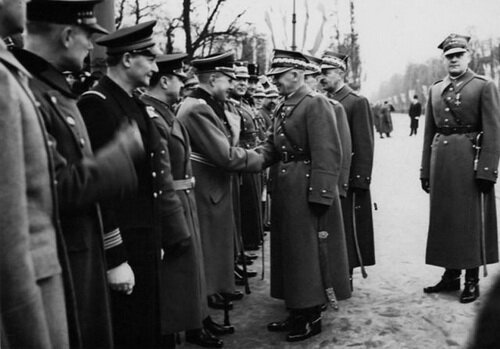 |
|
Joint military parade of Polish and German troops in 1938 http://forum.polismi.org/ |
Together with Germany, Poland participated in the sharing of Czechoslovakia. It also contributed into destroying by Hungary of the independent Carpathian Ukraine (modern Trans-Carpathian region) in 1938. Another “re-orientation” of the leaders of the Polish state in the summer of 1939 to the Anglo-French bloc was unsuccessful. Not having received the promised assistance from the Allies in September 1939, Poland fell under the double blow of Germany and Russia. Unfortunately, such “vacillations” can be observed in modern Polish politicians too.
Knowing this, I must agree with Friedman's assertion that “for Poland, the prospect of the German-Russian “Entente” historically is a nightmare”. However, for Russia not a less obnoxious “nightmare” is the prospect of a military-political union of Poland and Ukraine. This is evidenced by at least introducing the “The Day of Military Honour” in memory of the evacuation from Moscow in 1612 of the Polish-Ukrainian forces. Russian troops, like earlier in 1410, in Grunwald and Tannenberh, demonstrated the power of their united forces against the proud Teutons. Introduction to the Polish-Ukrainian Union of Scandinavian countries, Baltic States, Belarus, Central and South-Eastern Europe will be a true “Mizhmor'ya” capable to meet the expectations of its creators.
Ukraine in this military-political bloc, of course, is the cornerstone. After all, unlike Poland, with its eternal dilemma “East –West”, geopolitical axis of all Ukrainian lands is South-North. By its economic, scientific and military potential Ukraine is the most powerful of the above mentioned countries. Even after the devastating “reforming”, imposed from abroad. Ukraine has a positive historical experience of cooperation with Sweden as well as with Moldova and Turkey, with Lithuanians and Southern Slavs.
 |
| This map shows very well that the hypothetical Federation "Mizhmor'ya" would be the most Christian, authentic http://ttolk.ru/ |
With proper mobilization of its forces and means, the Ukrainian people will quickly restore its lost power and will stop another wave of Russian aggression. Unfortunately, unbiased analysis of more than twenty years of activity of Western elites in the Ukrainian direction of the world politics, gives reasons to believe that they, to put it mildly, did not help this process. Sadly, but this is how it is. Youthful passion for classics of Russian literature and an obsessive desire to learn the ostensibly “mysterious (?!) Russian character” obviously does not help Western politicians to reach the stage of maturity.
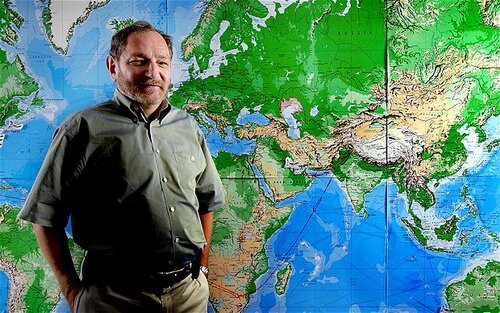 However, Friedman's assertion that “today in Europe there is no more important issue than the issue of the future of Ukraine,” gives the Ukrainian an opportunity to hope that the romantic position of the United States and its European allies, there will be replaced by a more balanced and realistic position.
However, Friedman's assertion that “today in Europe there is no more important issue than the issue of the future of Ukraine,” gives the Ukrainian an opportunity to hope that the romantic position of the United States and its European allies, there will be replaced by a more balanced and realistic position.
Sergiy Rudyuk

